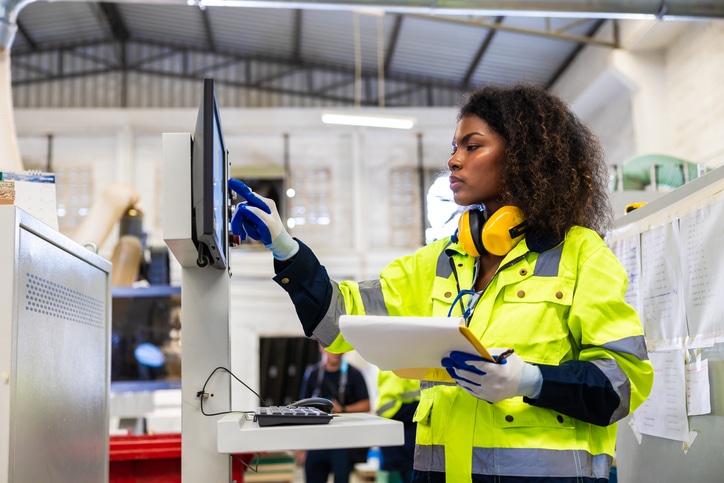AI and Warehouse Automation: Transforming Supply Chain Efficiency
According to industry studies, inefficient warehousing processes can cost companies up to 3,000 labor hours annually. Poor inventory management further drives up storage costs and reduces profitability. Leveraging artificial intelligence (AI) to streamline workflows and improve inventory accuracy is becoming essential for modern supply chain optimization.
AI is reshaping the warehousing and logistics landscape by boosting efficiency, accuracy, and scalability. From robotics and predictive analytics to autonomous vehicles and vision systems, AI-powered technology is now deeply embedded in warehouse operations. While the benefits are significant, successful implementation requires careful planning and a clear understanding of potential challenges.
Smarter Warehousing Through Automation and AI
One of the most valuable outcomes of AI in warehousing is enhanced operational efficiency. AI-enabled systems can automate repetitive tasks like picking, packing, sorting, and inventory management. This reduces human error, increases throughput, and supports round-the-clock operation.
For example, DHL’s use of collaborative robots (or cobots) in parcel sorting has improved its sorting capacity by at least 40%, achieving 99% accuracy in the process.
Data-Driven Inventory Optimization
Machine learning algorithms can analyze both historical and real-time data to improve demand forecasting and inventory placement. This reduces overstock and stockouts, while streamlining picking routes. AI can even prioritize where high-demand SKUs are placed within the warehouse to reduce travel time for employees and autonomous systems alike.
Bridging the Gap During a WMS Transition
Implementing a new warehouse management system can slow productivity if teams aren’t supported. When a national food distributor upgraded to Manhattan WMS, Capstone deployed a performance-based team to stabilize operations and maintain service levels. Discover how strategic workforce augmentation kept day-to-day execution on track during a critical systems change.
Improving Safety and Workforce Productivity
AI also enhances labor planning and workplace safety. Wearable devices and vision-based systems can monitor movements, encourage safe lifting techniques, and flag hazardous behavior. This helps reduce injury risk and supports compliance with safety regulations.
AI-based scheduling tools can forecast peak periods and recommend efficient staffing levels—critical for avoiding burnout and overtime during high-demand seasons. For warehouses facing labor shortages, especially in food and grocery logistics, AI helps fill productivity gaps without relying on extra headcount.
Quality Control and Loss Prevention with AI
AI technology is also proving effective for quality assurance and security. Vision systems can inspect packages for damage, verify labels, and detect anomalies before products leave the facility. These systems can also analyze behavioral patterns to detect potential theft or product misplacement, increasing overall inventory accuracy.
A Zebra Technologies survey found that 79% of logistics professionals believe AI will improve their ability to detect hazards and issue alerts, while 78% say it enhances issue detection and response.
Challenges to Adopting Warehouse AI
Despite the advantages, barriers remain. High upfront costs for robotics, software, and sensors can deter smaller warehouses and 3PLs. Integration with existing WMS and ERP platforms may also require significant time, technical expertise, and budget.
Workforce displacement is another concern. As more warehouse tasks become automated, low-skilled roles may be phased out. However, AI adoption also opens up opportunities in system maintenance, data analytics, and oversight—requiring new training and upskilling investments.
Data privacy and cybersecurity are also growing concerns. As AI systems collect vast amounts of information, ensuring compliance with data regulations becomes critical, especially for companies operating in multiple regions.
The Future of AI in Logistics Technology
AI’s role in warehousing is expected to grow. As machine learning, robotics, and sensor technologies evolve, warehouses will move toward hybrid models where humans and machines work in collaboration. These smart warehouses will deliver faster, safer, and more responsive supply chains.
AI is driving a shift in warehousing—from manual, reactive processes to intelligent, predictive systems. Companies that embrace AI and warehousing technology will be better positioned to reduce costs, improve performance, and meet rising customer expectations across the supply chain.
Connecting the Dots: Why It Matters for Capstone Partners
AI may be the engine, but operational know-how is the driver—and that’s where Capstone makes the difference. Our tech-enabled solutions combine smart automation with deep logistics expertise to improve warehouse performance where it counts. Contact us to see how Capstone can support your operation.

